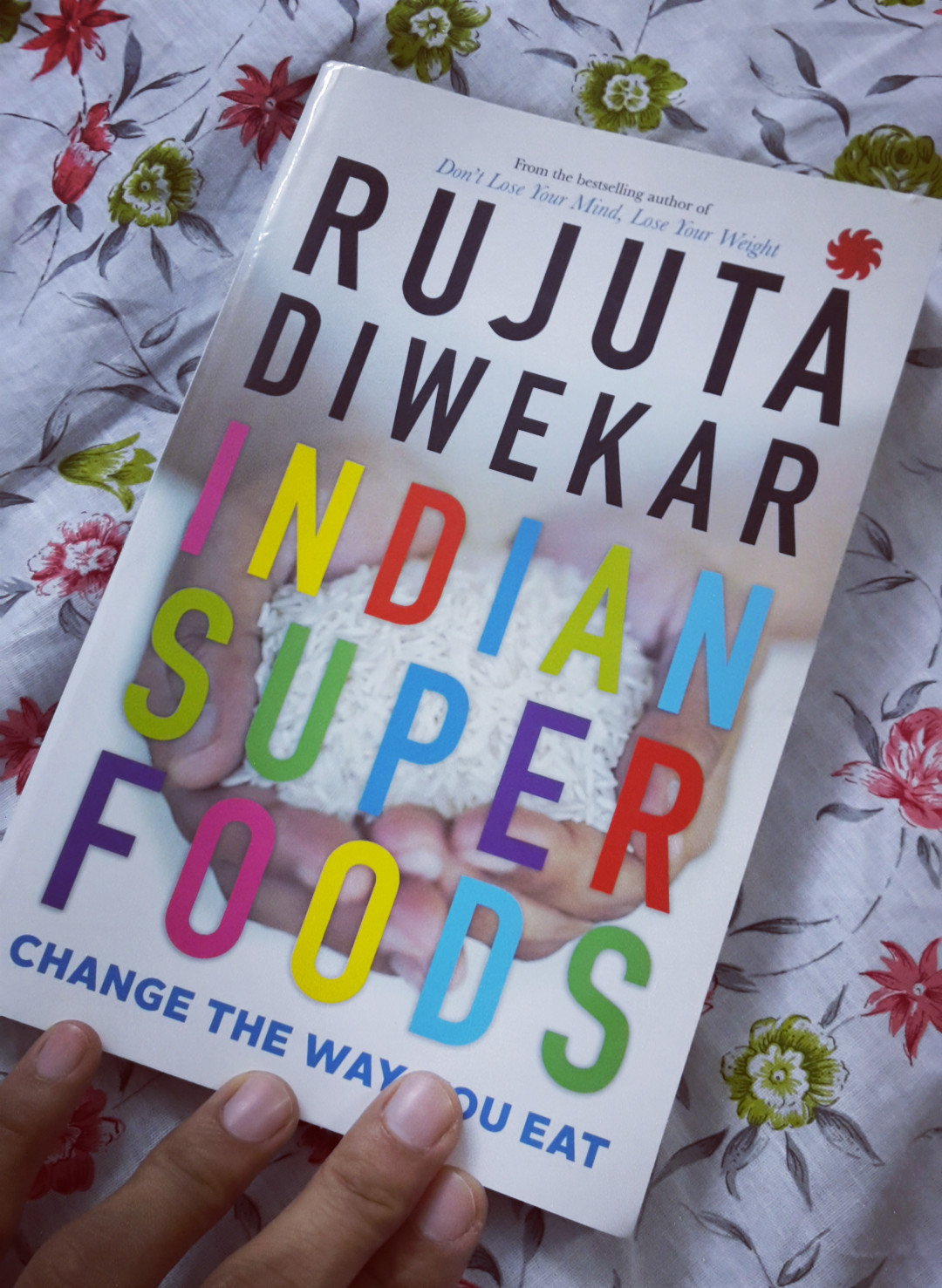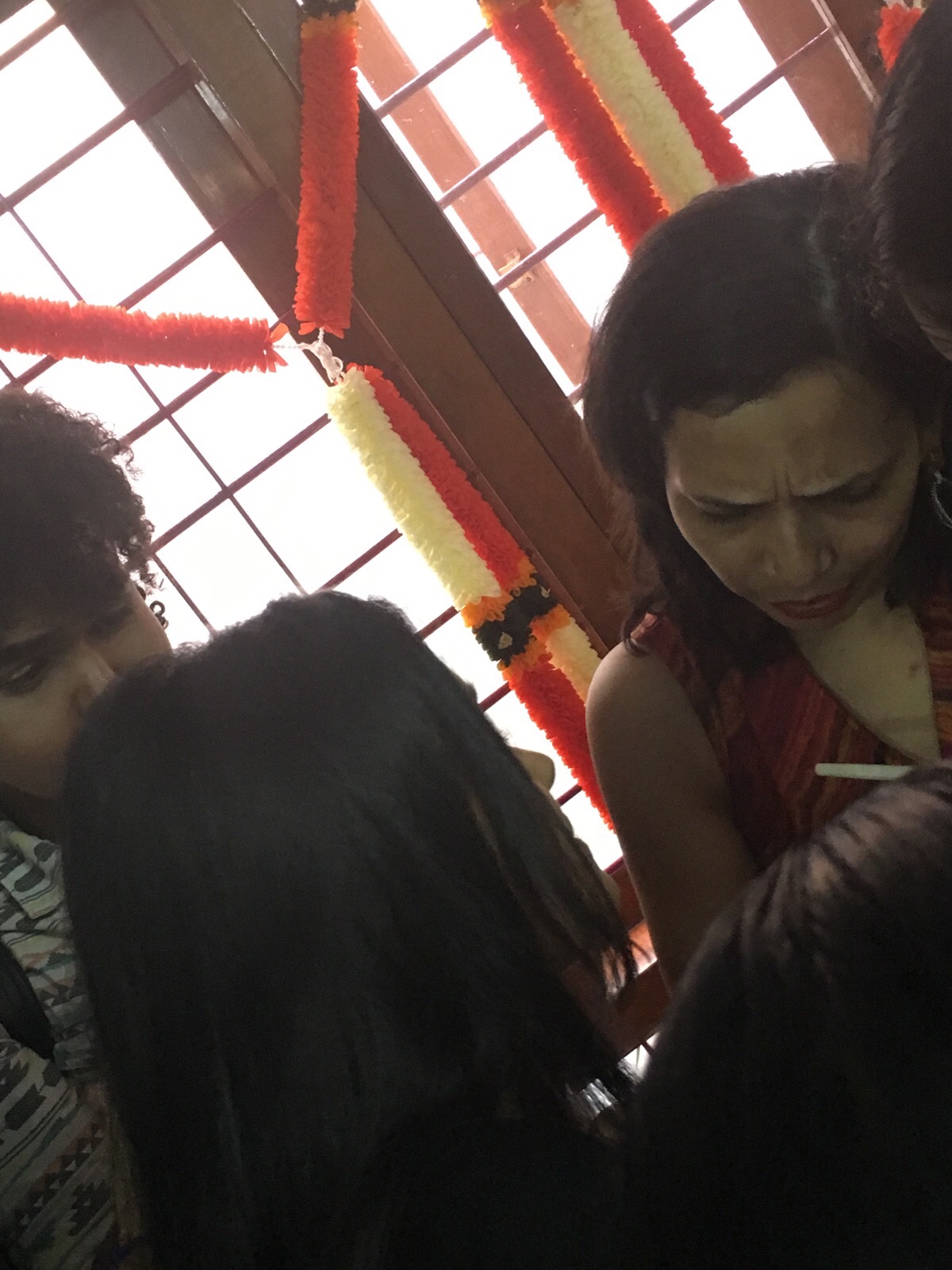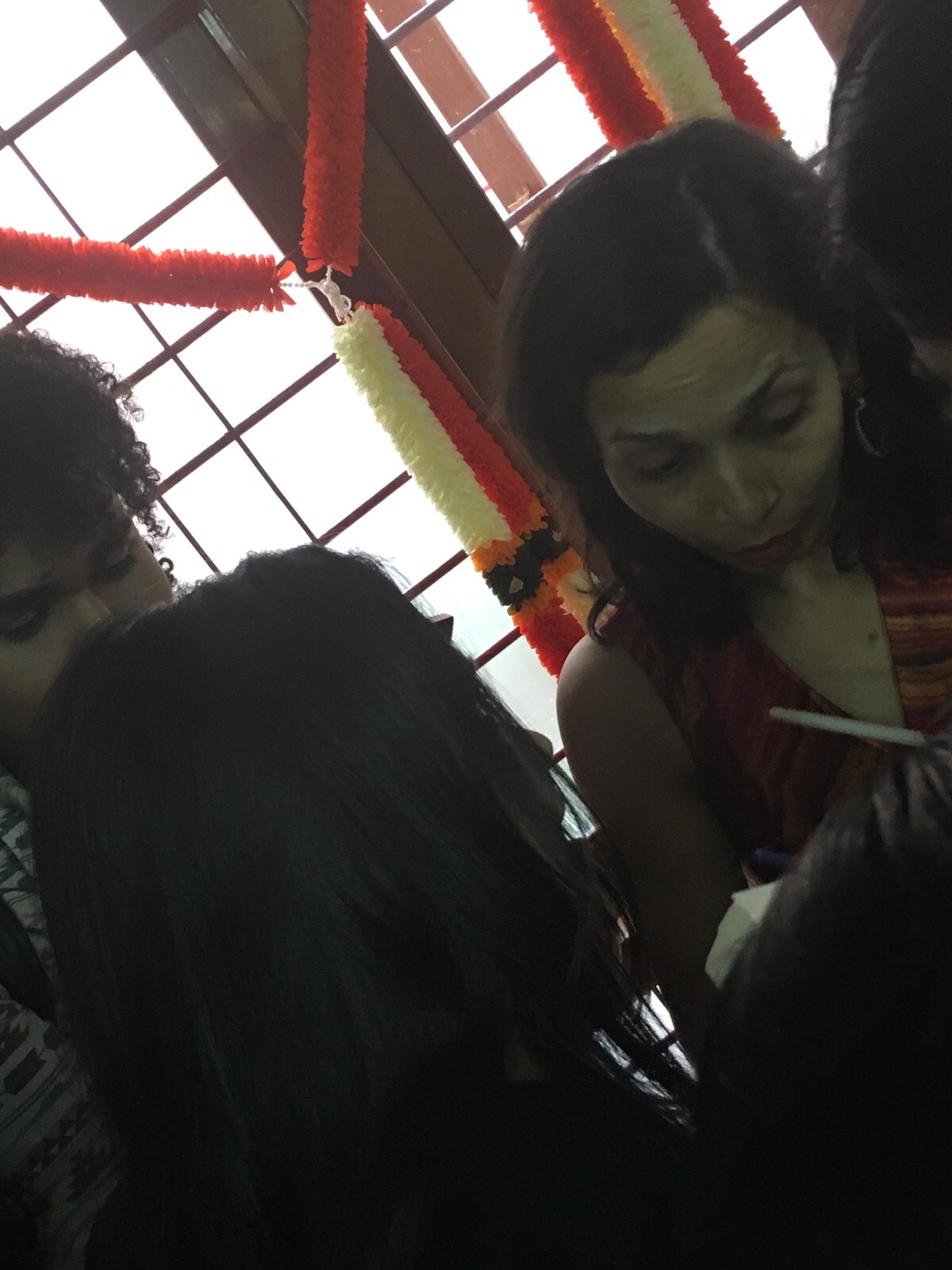Today was the first day I had an early morning session. I’ve become used to waking up around 7, so 5 am was a challenge (funny how easy it is to get into the habit of waking up late). I got ready quickly and hurried to the class. As usual the class was full, even at that early hour. Besides the yoga classes, I continue to read voraciously, and these days I’m reading Indian Superfoods by Rujuta Diwekar.
Rujuta’s books are relevant to our lives and times. By advocating for local food she makes health and fitness accessible to the masses. Most of us are so busy with the mundanity of life, that we don’t have time to hunt down the best quality goji berries or chia seeds. So this book is a great resource for those who would like to eat well with the least hassle. For me it was great because I believe in simple food and wholesome health. To stay in optimum health and shape is more a function of eating simple unadulterated food, instead of exotic produce and unpronounceable ingredients lists.
I believe if you focus on quality, then the most commonly available ingredients will have you glowing like a lightbulb.
In addition to this, Rujuta has also brought to light lots of fruits and vegetables from different regions in India. It helps in us becoming curious and a bit more experimental with our food, and also inculcates a sense of awareness of the richness of what our land has to offer. From ghee to something called the ambadi fruit, her book makes local produce come alive and become tempting. This blog isn’t a summary of the book, but just a little bit of info. The book has a lot more information to offer and I would really suggest that you read Indian Superfoods. However, here is a little bit of information to pique your interest:
- Ghee – It’s a myth that ghee is fattening. In fact, it is lipolytic, it breaks down fat. So if you eat ghee you’re helping in breaking down stubborn fat. Helpful advice that she gives for women: If you get skin breakouts before or with every period eat ghee at least three times a day. Plus she has a bonus recipe for how to make ghee.
- Kokum – this is a fruit I haven’t had, but I had a drink made out of this at Dastkaar. Rub kokum butter on the soles of your feet right before you sleep and you will sleep deeply, regardless of how stressed and frazzled you are. Definitely on my shopping list.
- Banana – here I have a banana before every class. Actually, in Bangalore as well. It’s a myth that bananas are fattening. They are low in fat and help in fat burning and in reducing cholesterol!
- Kaju – good to combat PCOD and hypothyroidism. Prevents adult acne and improves fertility too!
- Ambadi – I’ve never had this plant nor heard about it. Another item on my shopping list. If you know how to pronounce this word, do let me know. Interestingly, this local green (and other’s like it) are called ‘orphan crops’, crops that no one grows because there is no demand for them. You can make it into a sabzi and get your iron, vit B and folic acid from it. The stems of the Ambadi plant are used to make jhadoos and fabric. I wonder if they make yoga mats out of this…
- Rice – prevents premature wrinkling and supports good hair growth. Need I say more?
- Coconut – doesn’t contain cholesterol because it’s a plant based food. Plus it actually helps in reducing ‘central adiposity’ (fat in the middle) and so helps in ensuring a slim waist.
- Aliv – used in laddoos! Great for skin, it evens out skin tone, gets rid of patches and naturally brightens the complexion. Wonder if Diwali laddoos contain this seed…
- Jackfruit – low in fat and rich in fibre, so it helps in reducing cholesterol levels. Also, the fruit has a lot of anti-oxidants.
- Sugar – don’t replace with jaggery as both have different properties. Jaggery adds heat to the body while sugar is a coolant.
If the above points were interesting, you should go out and get a copy of Indian Superfoods. It does give you food for thought and even if you’re unable to apply everything she talks about into your life, it still helps to be aware of what we are eating and what are the food choices that are available to us.

My copy of Indian Superfoods by Rujuta Diwekar.
I’ve written about fenugreek or methi, another spice I consider a superfood in this blog. Because it’s available readily in Indian kitchens, you might find the post useful.
![20151219_130154[1]](https://yogawithpragya.com/wp-content/uploads/2015/12/20151219_1301541-1.jpg?w=169) For the last one week or so my friend Geetanjali and I have been excited about the Rujuta Talk that was held yesterday at Sadhu Vaswani Mission’s Little Lamps Pre School. The excitement was palpable at the venue. The seats up front were already taken and the camera people were ready. The best thing about Rujuta’s ideas and beliefs about food is that she preaches a holistic approach to food. There is nothing fitness fad-ish about what her advice, and her diet guidelines are ‘accessible’ for the masses. With this in mind I went prepared with pen and paper.
For the last one week or so my friend Geetanjali and I have been excited about the Rujuta Talk that was held yesterday at Sadhu Vaswani Mission’s Little Lamps Pre School. The excitement was palpable at the venue. The seats up front were already taken and the camera people were ready. The best thing about Rujuta’s ideas and beliefs about food is that she preaches a holistic approach to food. There is nothing fitness fad-ish about what her advice, and her diet guidelines are ‘accessible’ for the masses. With this in mind I went prepared with pen and paper.


![IMG-20151219-WA0010[1]](https://yogawithpragya.com/wp-content/uploads/2015/12/img-20151219-wa00101-1.jpg?w=193)